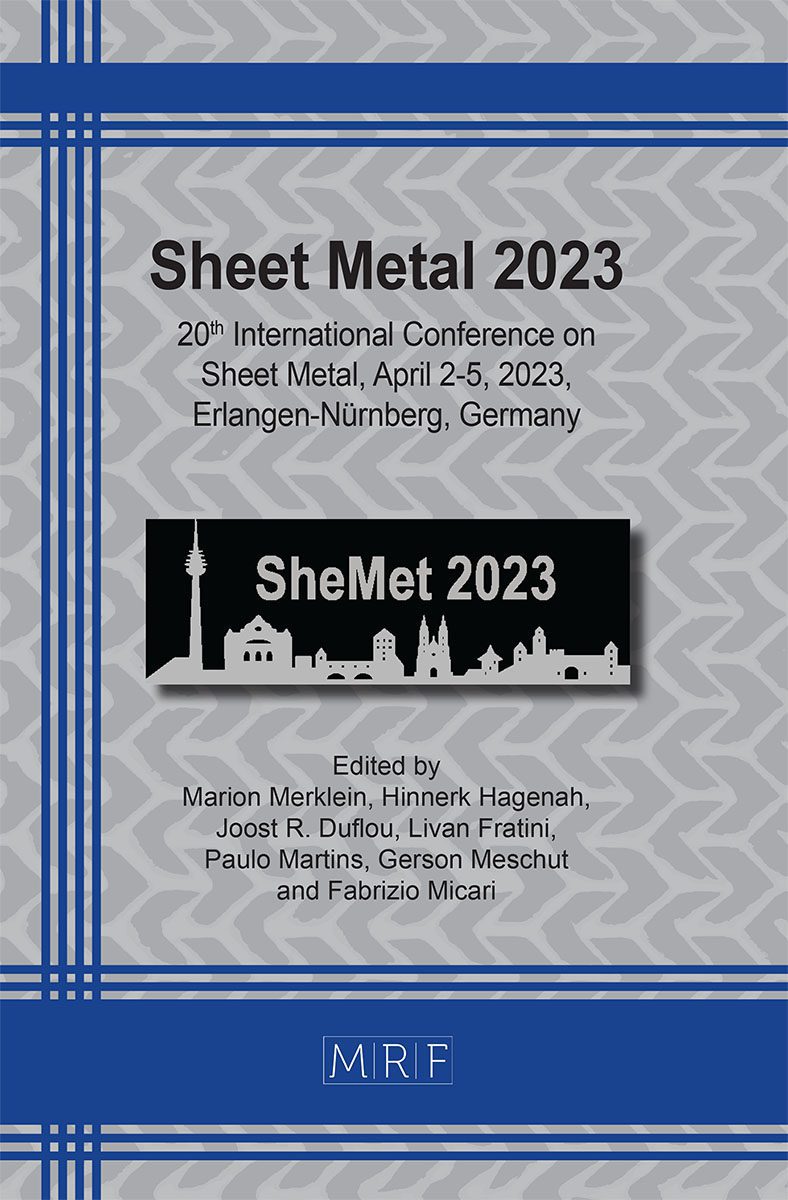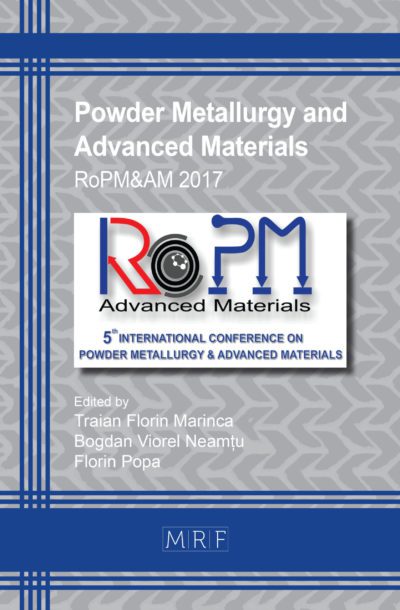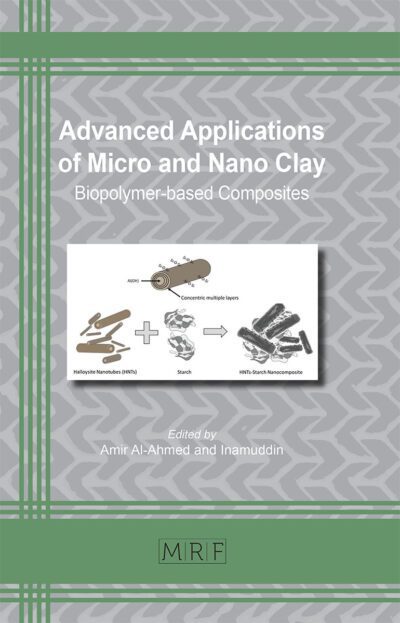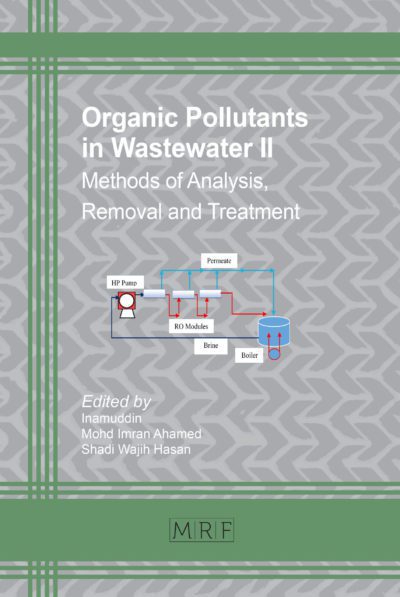Influence of geometrical parameters of conic pin structures in thermoplastic composite/steel hybrid joining
Julian Popp, Christoph Zirngibl, Benjamin Schleich, Sandro Wartzack, Dietmar Drummer
download PDFAbstract. Hybrid parts consisting of continuous fiber reinforced thermoplastic (CFRT) and steel components offer promising potential in lightweight construction. In this approach, the joining operation poses the major challenge due to different physical and chemical properties of both materials. This paper studies a joining method in which conical pin structures, protruding from the surface of the metal component, are inserted into the locally heated CFRT component to create a form fitting joint. The aim is to identify and quantify the influence of the parameters pin height and pin head diameter on the mechanical performance in single lab shear and cross head normal experiments. Based on the results it can be shown, that both an increased pin height and head diameter are beneficial under shear load in means of increased maximum load capacity while under normal load only an increased head diameter has clear benefits. Those effects are led back to the geometrical properties and the resulting stress distributions in the joining area.
Keywords
Composite, Joining, Hybrid Manufacturing
Published online 3/17/2023, 8 pages
Copyright © 2023 by the author(s)
Published under license by Materials Research Forum LLC., Millersville PA, USA
Citation: Julian Popp, Christoph Zirngibl, Benjamin Schleich, Sandro Wartzack, Dietmar Drummer, Influence of geometrical parameters of conic pin structures in thermoplastic composite/steel hybrid joining, Materials Research Proceedings, Vol. 25, pp 117-124, 2023
DOI: https://doi.org/10.21741/9781644902417-15
The article was published as article 15 of the book Sheet Metal 2023
![]() Content from this work may be used under the terms of the Creative Commons Attribution 3.0 licence. Any further distribution of this work must maintain attribution to the author(s) and the title of the work, journal citation and DOI.
Content from this work may be used under the terms of the Creative Commons Attribution 3.0 licence. Any further distribution of this work must maintain attribution to the author(s) and the title of the work, journal citation and DOI.
References
[1] W. Siebenpfeiffer, Leichtbau-Technologien im Automobilbau, ATZ/MTZ-Fachbuch, SpringerVieweg, 2014. https://doi.org/10.1007/978-3-658-04025-3
[2] B.D. Agarwal, L.J. Broutman, K. Chandrashekhara, Analysis and Performance of Fiber Composites. 4th Edition, John Wiley & Sons, Inc., Hoboken, 2017.
[3] M. Sommer, K. Edelmann, A. Wöginger, M. Christmann, J. Mack, L. Medina, Thermoplastische Prepregs und Halbzeuge, in: M. Neitzel, P. Mitschang, U. Breuer, (Eds.), Handbuch Verbundwerkstoffe, Carl Hanser Verlag, Munich, 2014, pp. 147–199.
[4] A. Yousefpour, M. Hojjati, J.-P. Immarigeon, Fusion Bonding/Welding of Thermoplastic Composites. Journal of Thermoplastic Composite Materials 17 (2004) 303–341. https://doi.org/10.1177/0892705704045187
[5] N.-M. Barkoula, J. Karger-Kocsis, Effects of fibre content and relative fibre-orientation on the solid particle erosion of GF/PP composites, Wear 252 (2002) 80-87. https://doi.org/10.1016/S0043-1648(01)00855-9
[6] K. Martinsen, S.J. Hu, B.E. Carlson, Joining of dissimilar materials, CIRP annals –Manufacturing Technology 64 (2015) 696-699. https://doi.org/10.1016/j.cirp.2015.05.006
[7] Z. Dawai, Z. Qi, F. Xiaoguang, Z. Shengdung, Review on Joining Process of Carbon Fiber Reinforced Polymer and Metal: Methods and Joining Process, Rare Metal Materials and Engineering 47/12 (2018) 3686-3696. https://doi.org/10.1016/S1875-5372(19)30018-9
[8] H. Schürmann, Klebeverbindungen, in: H. Schürmann, Konstruieren mit Faser-Kunststoff-Verbunden, Springer Verlang, Berlin-Heidelberg, 2005, pp. 569-604. https://doi.org/10.1007/b137636
[9] W. Brockmann, Adhesive Bonding of Polypropylene, in: J. Karger-Kocsis, Polypropylene: An A-Z Reference, Kluwer, London, 1999, pp. 1-6. https://doi.org/10.1007/978-94-011-4421-6_1
[10] P. Mitschang, R. Velthuis, R. Rudolf, Fügeverfahren für FKV, in: Neitzel M., Mitschang P., Handbuch Verbundwerkstoffe, 2nd Edition, Carl Hanser, Munich-Vienna, 2014. pp. 469-482. https://doi.org/10.3139/9783446436978.015
[11] M. Kraus, P. Frey, T. Kleffe, D Drummer, M. Merklein, Mechnical joining without auxiliary element by cold formed pins for multi-material-systems, AIP Converence Proceedings 2113, 2019. https://doi.org/10.1063/1.5112570
[12] J. Popp, T. Kleffel, D. Römisch, T. Papke, M. Merklein, D. Drummer, Fiber orientation Mechanism of Continuous Fiber Reinforced Thermoplastic Hybrid Parts Joined with Metallic Pins, Applied Composite Materials 28 (2021) 951-972. https://doi.org/10.1007/s10443-021-09892-0
[13] R. Plettke, A. Schaub, C. Gröschel, C. Scheitler, M. Vetter, O. Hentschel, F. Ranft, M. Merklein, M. Schmidt, D. Drummer, A new process chain for joining sheet metal to fiber composite sheets, Key engineering material 611-612 (2014) 1468-1475. https://doi.org/10.4028/www.scientific.net/KEM.611-612.1468
[14] E.E. Feistauer, S.T. Amancio-Filho, Ultrasonic joining of Lightweight Alloy/Fiber-Reinforced Polymer Hybrid Structures, Joining of Polymer-Metal Hybrid Structures: Principles and Applications, (2018) 307-333. https://doi.org/10.1002/9781119429807.ch11
[15] E.E. Feistauer, E. Ebel, J.M. Santos, S.T. Amancio-Filho, Ultrasonic joining of through-the-thickness reinforced Ti-4 Al-6 V and polyetherimide hybrid joints, Society of Plastics Engineers: SPE ANTEC Anaheim (2017) 1718-1724.
[16] S. Ucsnik, M. Scheerer, S. Zaremba, D.H. Pahr, Experimental investigation of a novel hybrid metal-composite joining technology, Composites Part A 41 (2010) 369-374. https://doi.org/10.1016/j.compositesa.2009.11.003
[17] R. Thakkar, S. Ucsnik, Cost Efficient Metal to Fibre Composite Joining, 16th European Conference on Composite Materials (2014).
[18] J. Popp, T. Kleffel, D. Drummer, Influence of pin geometry on the joint strength of CFRT-metal hybrid parts with metallic pins, Joining plastics/Fügen von Kunststoffen 3 (2021) 177-183.
[19] J. Popp, D. Römisch, M. Merklein, D. Drummer, Joining of CFRT/Steel Hybrid Parts via Direct Pin Pressing of Cold Formed Non-Rotational Symmetric Pin Structures, Applied Sciences (2022) 12. https://doi.org/10.3390/app12104962
[20] D. Römisch, J. Popp, D. Drummer, M. Merklein, Joining of CFRT-steel hybrid parts via hole-forming and subsequent pin caulking, Production Engineering 16 (2022) 339-352. https://doi.org/10.1007/s11740-021-01093-9
[21] J. Popp, D. Drummer, Joining of continous fiber reinforced thermoplastic/steel hybrid parts via undercutting pin structures and infrared heating, Journal of advanced joining processes, 5, (2022). https://doi.org/10.1016/j.jajp.2021.100084
[22] R.J.S. Baptista, J.P.M. Pragana, I.M.F. Bragança, C.M.A. Silva, L.M. Alves, P.A.F. Martins: Joining aluminium profiles to composite sheets by additive manufacturing and forming, Journal of Materials Processing Technology 279 (2020). https://doi.org/10.1016/j.jmatprotec.2019.116587

































